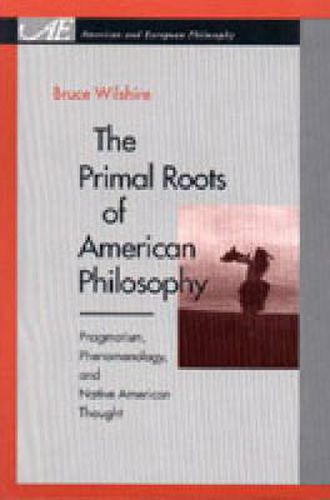Readings Newsletter
Become a Readings Member to make your shopping experience even easier.
Sign in or sign up for free!
You’re not far away from qualifying for FREE standard shipping within Australia
You’ve qualified for FREE standard shipping within Australia
The cart is loading…






Continuing his quest to bring American philosophy back to its roots, Bruce Wilshire connects the work of such thinkers as Thoreau, Emerson, Dewey, and James with Native American beliefs and practices. His search is not for exact parallels, but rather for fundamental affinities between the equally organismic thought systems of indigenous peoples and classic American philosophers.
Wilshire gives particular emphasis to the affinities between Black Elk’s view of the hoop of the world and Emerson’s notion of horizon, and also between a shaman’s healing practices and James’s ideas of pure experience, willingness to believe, and a pluralistic universe. As these connections come into focus, the book shows how European phenomenology was inspired and influenced by the classic American philosophers, whose own work reveals the inspiration and influence of indigenous thought.
Wilshire’s book also reveals how artificial are the walls that separate the sciences and the humanities in academia, and that separate Continental from Anglo-American thought within the single discipline of philosophy.
$9.00 standard shipping within Australia
FREE standard shipping within Australia for orders over $100.00
Express & International shipping calculated at checkout
Continuing his quest to bring American philosophy back to its roots, Bruce Wilshire connects the work of such thinkers as Thoreau, Emerson, Dewey, and James with Native American beliefs and practices. His search is not for exact parallels, but rather for fundamental affinities between the equally organismic thought systems of indigenous peoples and classic American philosophers.
Wilshire gives particular emphasis to the affinities between Black Elk’s view of the hoop of the world and Emerson’s notion of horizon, and also between a shaman’s healing practices and James’s ideas of pure experience, willingness to believe, and a pluralistic universe. As these connections come into focus, the book shows how European phenomenology was inspired and influenced by the classic American philosophers, whose own work reveals the inspiration and influence of indigenous thought.
Wilshire’s book also reveals how artificial are the walls that separate the sciences and the humanities in academia, and that separate Continental from Anglo-American thought within the single discipline of philosophy.